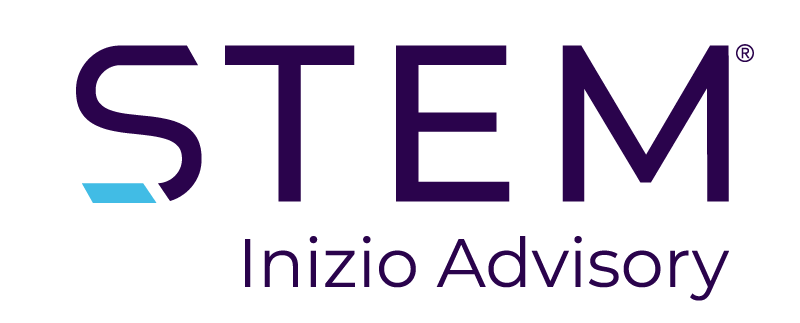Authored by: Ryan Caradonna
The role of Medical Science Liaisons (MSLs) has undergone a remarkable transformation. No longer confined to disseminating scientific information to a select group of Key Opinion Leaders (KOLs), MSLs now find themselves at the forefront of engaging a diverse set of stakeholders across the entire product lifecycle. As their responsibilities grow, so do the challenges of measuring and articulating the value and impact they bring to the table. In this article, Ryan Caradonna, President Americas of STEM Healthcare, explores these challenges and the metrics required to understand the contribution MSLs make within pharmaceutical organizations.
In recent decades, MSLs have transitioned from being seen as “scientific resources” to playing critical roles as strategic leaders within pharmaceutical organizations, thanks to their influence extending far beyond traditional KOLs. Key Decision Makers (KDMs) in health systems, executives, quality strategists, and patient advocacy groups all seek the insights MSLs provide to make informed, data-driven decisions. In an industry where access is increasingly restricted, MSLs enjoy a unique advantage, navigating fewer access-related constraints due to their ability to understand and communicate complex data and engage in meaningful conversations.
The increasing strategic importance of MSLs necessitates a closer examination of their value and impact. The growing size of field medical teams and the associated financial investments demand assurance that organizations are obtaining good value for money. This shift from MSLs being considered “nice to have” to becoming indispensable requires senior leaders to assess the effectiveness of MSL teams and connect their value and impact to broader organizational success.
While the importance of MSLs is undeniable, measuring their value remains a substantial challenge. The industry lacks a universally accepted set of metrics to evaluate MSLs. Territory size, experience levels, team sizes, and the product’s lifecycle position all contribute to the complexity of this challenge. Moreover, the non-promotional nature of MSL roles makes it inappropriate to directly tie their value to sales metrics. As a result, senior leaders, particularly those in commercial leadership roles, often find themselves lacking awareness and understanding of the pivotal role, value, and impact of MSLs.
Pharmaceutical companies currently use a mix of quantitative and qualitative metrics in an attempt to evaluate MSL value. Quantitative metrics are objective and numeric; they can be simply measured and counted. They are easy to obtain and track over time. They are often used by commercial leaders to assess field sales teams due to the uniform nature of sales calls and, when coupled with sales figures, can be somewhat effective at providing insights into the impact of a field sales organization. Examples of quantitative measures include:
- KOLs engaged: Keeping count of the number of relationships built, maintained, and in progress provides insight into the MSL’s understanding of the healthcare ecosystem.
- MSL meetings: Assessing the skill and expertise of MSLs in acquiring appointments and obtaining access to KOLs and KDMs.
- Length of interactions: Measuring the ability of MSLs to build relationships with KOLs.
- Insights generated: Determining whether an interaction with a KOL provides insight for better-informed decision-making.
- Trials supported: Tracking the number of patients enrolled in trials demonstrates the MSL’s ability to align the needs of the customer with the organization.
- Topics of discussion: Measuring the number and types of topics demonstrates that MSLs are engaging in the right scientific discussions with customers.
- These metrics can be coupled with qualitative measures, which are subjective, descriptive, and provide a deeper understanding of quality and context. Examples include:
- Feedback from KOLs: Surveying the value of MSLs to the customer measures the MSL’s ability to create a positive customer experience.
- Internal stakeholder review: Analyzing the relationship from an internal stakeholder perspective demonstrates the ability to work collaboratively.
- Direct observations: Analyzing interactions provides insights into strategy alignment and MSLs’ progress over time.
- Quality of insights: Examining the quality of interactions and the ability to gather information
- Scientific and medical expertise: Assessing understanding to drive technical insight for more in-depth information from KOLs.
Qualitative metrics are generally viewed as a more appropriate barometer of MSL value, but they are difficult to measure in a standardized fashion due to their inherent complexity and the presence of numerous confounding factors, including subjectivity and bias. For example, it is very challenging for MSLs to objectively self-report the quality of their interactions in a consistent and standardized fashion. Field managers face the same challenge in their evaluation of MSL’s customer interaction. These skills are not only challenging to measure but also challenging to convey effectively to senior leadership.
To present a holistic picture of MSL value and effectively articulate that value to senior leadership, there is a need to identify meaningful qualitative measures that can be captured in a consistent, objective, and standardized fashion to complement the quantitative metrics. This balanced approach will provide a more comprehensive understanding of the contributions MSLs make within pharmaceutical organizations.
Furthermore, the critical gap in evaluating MSL value necessitates objective, trained professionals who understand the field medical role and can enhance evaluation through firsthand observations. This approach provides an outside, objective assessment of MSLs’ alignment with objectives during engagements, allowing for quantifiable measurement of interaction quality. Benchmarked against industry averages, this method offers insights into MSL effectiveness and areas for improvement.
In this dynamic landscape, evaluating MSLs’ value is not just a challenge; it’s an imperative step toward ensuring organizational success in an increasingly complex industry. The evolution of MSLs from scientific resources to strategic leaders within pharmaceutical organizations is self-evident. What’s not always clear though is the most effective approach to measuring their effectiveness and value for money. It requires a multi-faceted approach. By partnering with trained and experienced professionals with the knowledge and experience in bridging that evaluation gap, pharmaceutical organizations can benefit from more actionable insights and recommendations. These strategic partnerships will better equip them with the necessary tools to navigate the intricacies of measuring MSLs’ contributions, ensuring a more effective and informed approach to measuring their impact.
STEM, an Inizio Advisory Company, is a trusted global advisor for pharmaceutical, life science, and healthcare companies. For more than 15 years, STEM has been helping life science companies optimize their performance by measuring the alignment between their brand strategy and execution at every stage of the product lifecycle. Visit us to find out more.

